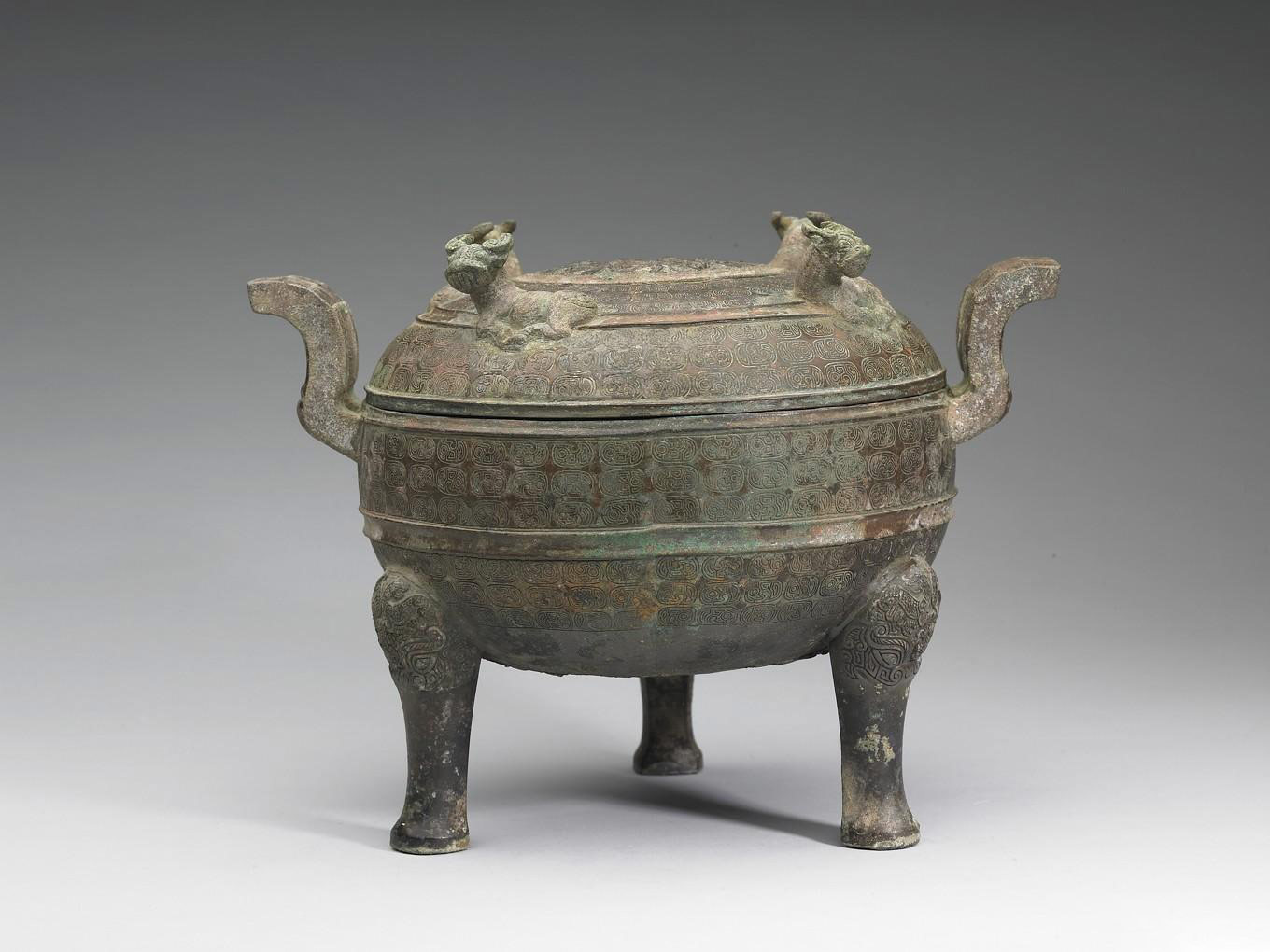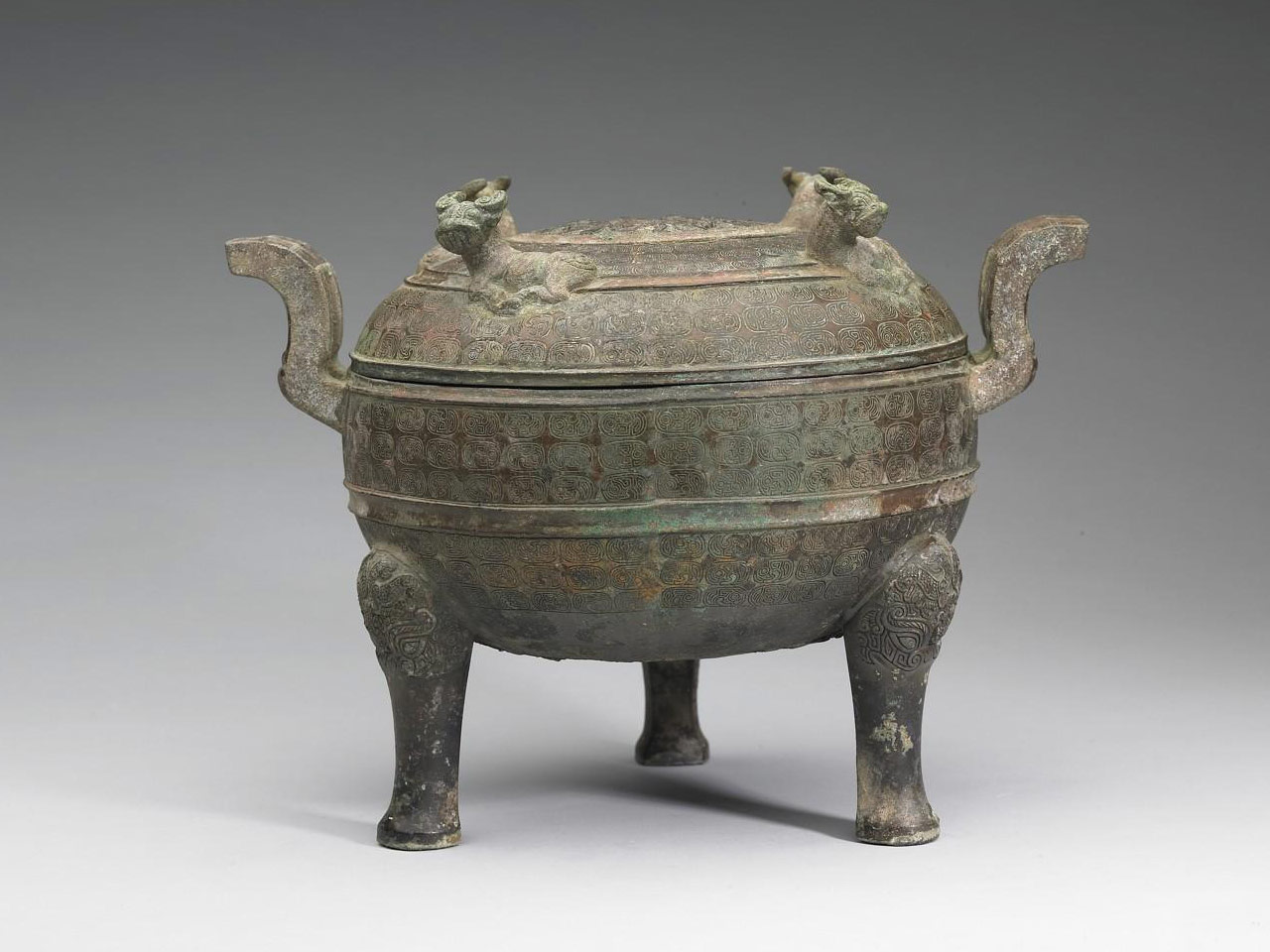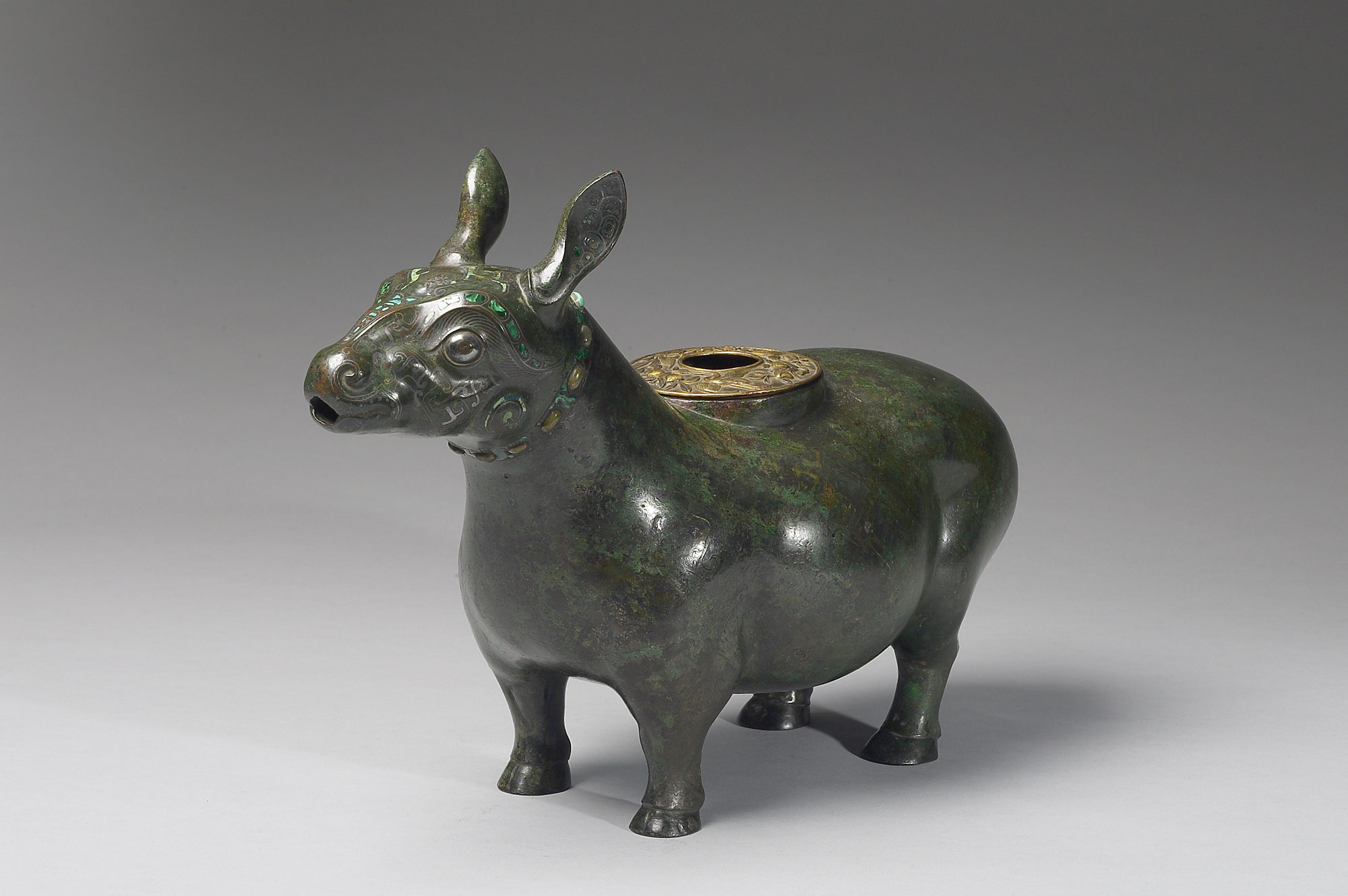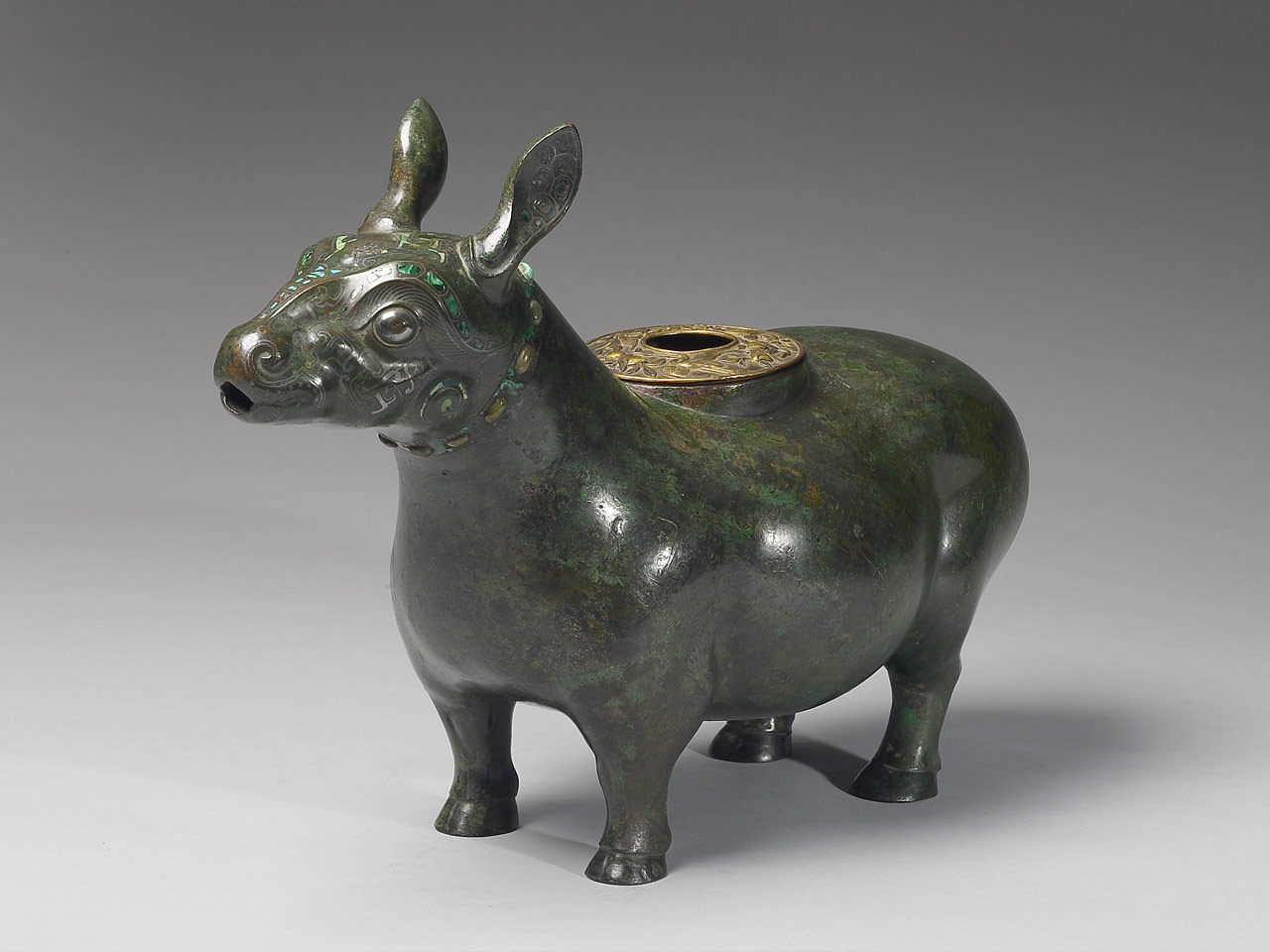The Glamorous New Age: Bronzes from the Spring-and-Autumn to the Warring States Period
During the Eastern Zhou period, the regional lords rose to challenge each other for dominance as the central overlord House of Zhou's power weakened. Against the backdrop of the new ruling class and new cultures Chinese bronzes also entered a new phase of development.
The court-commissioned bronzes that once flourished back in the Western Zhou dwindled and then totally disappeared from the scene. In place of them were new bronzes from regional states, commoners-turned-aristocrats via military exploits, and wealthy industrialists and merchants. The newcomers put even more stress on the ornamentation of their wares, leaning toward a dainty style of exquisiteness in contrast to the grand and solemn manner prevalent in Shang and Zhou. Fancy skills such as inlay and amalgam gilding proliferated, creating artistically elegance and glamour, while the practical aspects of bronzes making were also paid attention. Artisans started to mark their names on bronzes, indicative of a production system of rigor and accountability now in place to meet the requirements of practical use.
Overall, the changes reveal the decreasing importance of bronzes yet the afterglow still glittered, even more dazzling than ever before.



